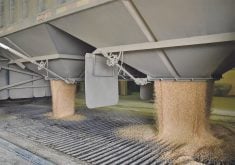The conversion has been gradual, but over the past 20 years, and especially the past 10, crop commissions have taken over more and more of the roles traditionally performed by provincial agriculture departments.
In each province, at various times, acrimony has erupted over cuts to agricultural staff and functions. In the past, cuts were sometimes justified on the grounds that private agriculture companies could provide the advice and guidance producers might be seeking and there was no need for government to provide this service.
Many worried about input suppliers promoting their products rather than giving unbiased advice. Companies were formed to provide agronomic advice divorced from product sales, but the advice was no longer free.
Read Also

Kochia has become a significant problem for Prairie farmers
As you travel through southern Saskatchewan and Alberta, particularly in areas challenged by dry growing conditions, the magnitude of the kochia problem is easy to see.
Meanwhile, the major crop commissions grew in size and influence. Over time, many have added staff and taken on additional responsibilities. Through producer levies, they have the funding, and they’re governed by elected farmer directors.
Thankfully, a great deal of co-operation and co-ordination now occurs between provincial agriculture departments and the crop commissions. In many instances, private industry also plays a role.
While it will never be perfect and the relationships continue to evolve, it’s mostly a win-win-win for producers, provincial governments and the crop commissions.
Producers have more control than the olden days because their levies fund the commissions. Provincial governments aren’t expected to do as much extension and programming, which means less government funding. Unimpeded by government bureaucracy, the commissions can sometimes accomplish projects more easily.
Numerous high-profile examples demonstrate the shift in roles. You probably get more informational emails and newsletters from various crop commissions than you do from your provincial agriculture department.
Plus, the commissions often take advocacy and lobbying roles on everything from the proposed Bunge takeover of Viterra to the looming strike threat by both major railways.
Just this week it was announced that new Prairie-wide fusarium head blight risk maps are available to producers in all three Prairie provinces. The tool provides assessment of fusarium risk levels in spring wheat, winter wheat, barley and durum based on weather conditions.
These risk maps were created as part of a three-year research project led by the University of Manitoba’s Paul Bullock with collaborators from Alberta Agriculture, Saskatchewan Agriculture, Manitoba Agriculture, the Manitoba Crop Alliance, Sask Wheat, SaskBarley and Alberta Grains.
Without the involvement of crop commissions, it seemed projects were typically provincial in nature rather than being co-ordinated across the entire Prairie region. You’d often see subsoil moisture maps or grasshopper forecast maps that didn’t line up along provincial boundaries.
In Saskatchewan, the Guide to Crop Protection, the bible for herbicide, fungicide and seed treatments, is still assembled by the Saskatchewan agriculture ministry. Alberta’s equivalent publication, known as the Blue Book, is collaboratively produced by three of Alberta’s crop commissions: Alberta Canola, Alberta Grains and Alberta Pulse Growers. The transition away from government occurred a number of years ago.
Crop commissions have also become key sounding boards for government policy. If you want feedback on a current or emerging issue, who better to call than the staff and directors of crop commissions?
How this evolves in the years ahead is anyone’s guess, but it’s difficult to envision provincial ag departments taking back an expanded role when commissions are willing and able to fulfil these sorts of functions.
While the activities will no doubt continue to evolve, the co-operation appears to be serving farmers quite well.
Kevin Hursh is an agricultural journalist, consultant and farmer. He can be reached by e-mail at kevin@hursh.ca.


















